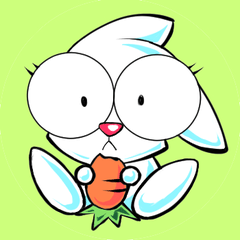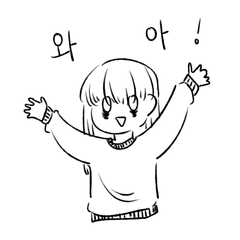

I made it for myself because it was a hassle to make items every time I had an instant sale. Since it's a big deal, I thought I'd publish it.
It's not flashy, but you can create a simple and well-styled menu just by selecting the layout according to the purpose and number and incorporating images and text.
即売会のたびにお品書き作るのがめんどくさかったので自分用に作ったものです。せっかくなので公開してみようかと。
派手さはないですが、用途や数に応じてレイアウトを選択して画像やテキストを組み込むだけでシンプルで体裁の整ったお品書きが作れます。
─ ─ ─ ─ ─ ─ ─ ─ ─ ─ ─ ─ ─
* Since we received a notification that there were fonts in the text layer that could not be used when distributed as materials, we changed the font of the text layer to Iwata Antic B font (I-OTF Antic Std B) and replaced the images of explanations and usage examples.
* Added layout.
* A guide layer has been added.
* The layer configuration has been changed.
─ ─ ─ ─ ─ ─ ─ ─ ─ ─ ─ ─ ─
It is a set of all layers of various distribution placement patterns.
It is designed to fit perfectly with the original size of A4/350 dpi.
In addition, the aspect ratio of the cover and sample installation points is assumed to be basically B5 size.
You can customize the font, font size, character filling, line spacing, label color, font color, etc. as you like.
It is hidden by default, but since guide lines are installed at roughly 33px intervals in the guide folder, you can easily create a grid layout that adjusts the spacing between distributed items by combining them with [snap to special ruler].
You can also combine items from each layer.


[1 large item (1)]
It is recommended for new publications and other distributions that you want to stand first.

[1 large item (2)]
It is recommended for distributions that want to make the image look larger, such as when you want to arrange a new issue + goods set, or when you want to line up all multiple types of acky.

[2 items horizontally (1)]
It is recommended when you want to put two distributions side by side on one page, but each has a different price.

[2 items (2) horizontally]
The basics are the same as [2 items horizontally (1)], but it is recommended when you plan to distribute them at the same price.

[2 items + 1 item horizontally]
When there are 2 new books + 1 type of existing publication, etc.

[2 items vertically]
It is a vertical version with width 2.

[3 items vertically]
The location of the cover and the text area are generally narrow, so it is recommended when you want to display past works and previously published information side by side.

[3 items horizontally (1)]
Since the title area is common, it is recommended for series, postcards, goods and other items that fall into the same category.

[3 items horizontally (2)]
The basics are the same as [3 items (1) horizontally], but the distribution price part is the same.

Examples of use



─ ─ ─ ─ ─ ─ ─ ─ ─ ─ ─ ─ ─
※テキストレイヤーの中に素材として配布する際に使用できないフォントが混ざっていたとの連絡があったため、テキストレイヤーのフォントをイワタアンチック体Bフォント(I-OTF アンチック Std B)に変更し、解説や使用例の画像を差し替えました。
※レイアウトを追加しました。
※ガイドレイヤーを追加しました。
※レイヤー構成を変更しました。
─ ─ ─ ─ ─ ─ ─ ─ ─ ─ ─ ─ ─
いろんな頒布物の配置パターンのレイヤーが全部セットになっています。
A4/350dpiの原稿サイズにぴったり合うようになっています。
また、表紙やサンプルの設置箇所の縦横比率は基本B5サイズ想定です。
フォントやフォントサイズ、字詰め、行間、ラベルカラー、フォントカラーなどお好きにカスタマイズできます。
デフォルトでは非表示ですが、ガイドフォルダに大体33px間隔でガイド線を設置してあるので、【特殊定規にスナップ】と組み合わせれば簡単に頒布物同士の間隔を調整可能なグリッドレイアウトが組めます。
各レイヤーのアイテム同士を組み合わせたりなどもできます。


【大きく1アイテム(1)】
新刊など、1番目立たせたい頒布物にお勧めです。

【大きく1アイテム(2)】
新刊+グッズセットを並べたいときや、アクキー複数種などを全部並べたいときなど、画像を大きく見せたい頒布物にお勧めです。

【横に2アイテム(1)】
2つの頒布物を1ページに横並びにしたいけどそれぞれ価格が異なるときなどにお勧めです。

【横に2アイテム(2)】
基本は【横に2アイテム(1)】と同じですが、同じ価格で頒布する予定のときなどにお勧めです。

【横に2アイテム+1アイテム】
新刊 2種+既刊1種のときなど。

【縦に2アイテム】
横2の縦バージョンです。

【縦に3アイテム】
表紙の設置箇所やテキスト領域などが全体的に狭目なので、過去作や既刊情報などを並べて表示したいときにお勧めです。

【横に3アイテム(1)】
タイトル領域が共通になっているのでシリーズものとかポストカードとかグッズ系とか同じカテゴリに分類されるものにお勧めです。

【横に3アイテム(2)】
基本は【横に3アイテム(1)】と同じですが頒布価格の部分が共通になっています。

使用例



Old version

































